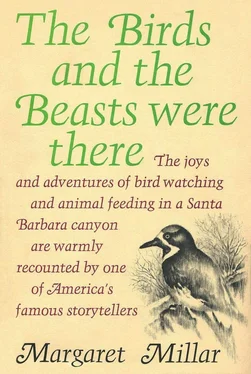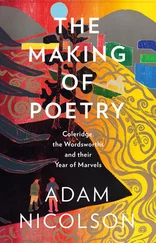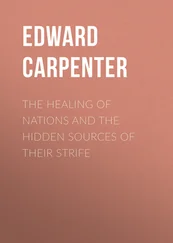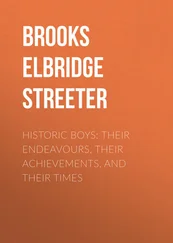This olive grove, left untended for years and with a heavy growth of underbrush between the trees, was severely damaged by the fire. The underbrush was the main reason for the destruction, not, as some people believed, the oil content of the wood or leaves. When I walked through the area a week after the fire ended, all the trees looked dead, and continued to do so for a long time. Yet on a visit in mid-January, sixteen months after the fire, I noticed that nearly every blackened stump was showing some greenery at the base.
The heavy rains in November and December had caused the various kinds of grasses to grow thick and tall, and there were birds everywhere: house finches, white-crowned sparrows, golden-crowned sparrows and lesser goldfinches foraged in flocks, with the sparrows providing the dinner music, assisted by two or three invisible wrentits. The brown towhees took part with an occasional chink, reminding me of gradeschool monotones who are allowed to accompany their musical classmates by “playing” percussion pie plates or cake tins. Dozens of quail, securely hidden, ticked and talked, discussing the intruder among themselves without bothering to lower their voices. They made it plain that they considered me a yark and a and since I didn’t know what a yark or a kookquat was, I couldn’t very well contradict them.
The same visit provided an unexpected bonus, a pair of black-chinned sparrows, male and female, resting on the burned branch of an olive tree. These birds are normally seen only during the late spring and summer in stands of chamise-dominant chaparral in the mountains or foothills. Finding them in January near the city limits was highly irregular. Perhaps the Coyote fire had something to do with their appearance since the species is known to be partial to burn areas where the new vegetation is only half grown.
On my next visit to the olive grove in mid-July, most of the trees gave evidence that they would recover completely in time. Branches growing out of the woody crown were as long as six feet and covered with silver-green leaves.
Even without the braceros and the wine wagon to keep them on the job, there will someday be another crop of olives for the white-crowned sparrows, robins and California thrashers.
The forest was turning green again. For residents of the fire areas the change was gradual. For those who only visited from time to time it was incredibly fast and far, from death to life. At the higher altitudes the white-bark ceanothus had a fresh growth of the tough, wiry stems and sharp spikes which kept predators away from such guests as the green-tailed towhee and the mountain quail. Closer to sea level the green-bark ceanothus was performing a similar function for the lazuli bunting and California quail, the wrentit and lark sparrow.
Soon manzanita apples would again be ripening for the cedar waxwings, toyon berries for the purple finches and mistletoe for the phainopeplas. Oak buds were already appearing for the band-tailed pigeons, and there was promise of a fresh crop of chaparral currants for the hermit thrushes, mountain cherries for the Townsend solitaires, nightshade for the grosbeaks. Through the picture window beside my chair I watched the mountains recover from the fire, each day bringing a new patch of green that turned to violet when the sun set.
As each day of recovery came and went, and each new flight of birds landed on the ledge to feed, I was continually reminded of a letter John Keats sent to a friend in 1817.
The setting Sun will always set me to rights, he wrote, or if a Sparrow come before my Window I take part in its existence and pick about the Gravel.



![Маргарет Миллар - Rose's Last Summer [= The Lively Corpse]](/books/384369/margaret-millar-rose-s-last-summer-the-lively-c-thumb.webp)


![Маргарет Миллар - The Iron Gates [= Taste of Fears]](/books/433837/margaret-millar-the-iron-gates-taste-of-fears-thumb.webp)





